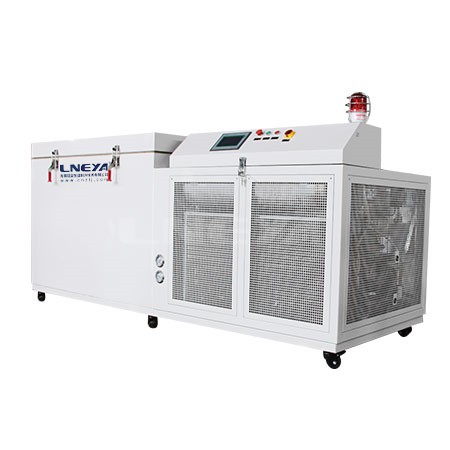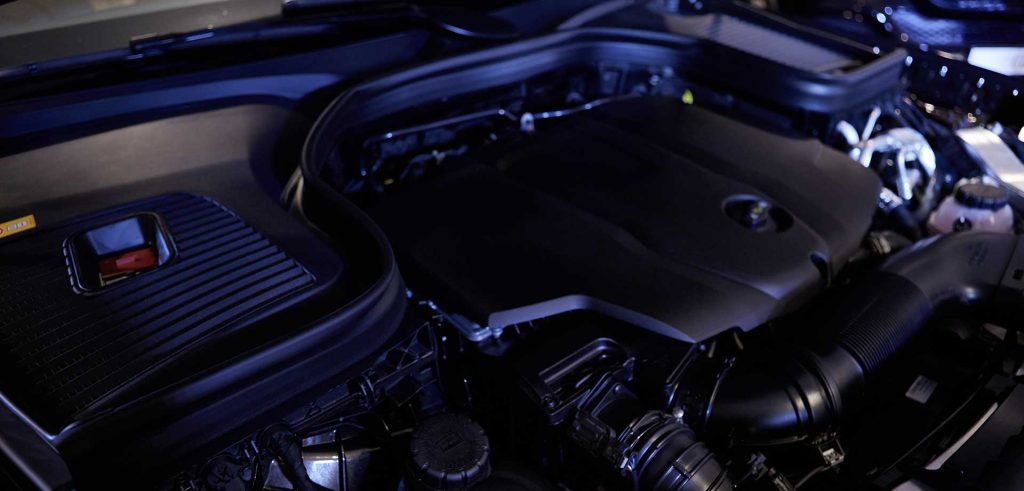From Room Temp to Cryo: 5 Benefits of Deep Freezing Metal Parts
Ever wondered why premium tools, automotive parts, or aerospace components last longer? One reason is a special process called cryogenic treatment — or simply, freezing metal. Everyday items like kitchen knives, car engines, and precision instruments can become significantly more durable after undergoing cryogenic treatment. This seemingly distant technology is already impacting your daily life.
So why do metals need to be frozen? What is its principle? Where can it be applied? This article will reveal it to you.
What is metal freezing?
Metal freezing, also known as cryogenic treatment, involves gradually cooling metals to extremely low temperatures (typically between -80°C and -196°C), holding them there for 8–48 hours, and then slowly bringing them back to room temperature.This process changes the internal structure of the metal through freezing, enhancing its overall performance.

Why freeze metal?
Metal, like freshly poured concrete, might appear solid but still contains internal inconsistencies. After forging or heat treatment, internal structures can remain unstable, with uneven hardness. Cryogenic treatment helps eliminate these weaknesses by transforming retained austenite into harder martensite — a process rooted in metallurgy.
An example can help you understand better. A newly bought knife may look very sharp, but it will become dull after a while. This may be because the material is not stable enough inside. If it is frozen during the manufacturing process, it can maintain its sharpness and service life for a longer time.
What are the benefits of frozen metal?
Improve hardness
After high-temperature quenching, the metal still retains some austenite inside, which is characterized by relatively low hardness and instability. In order to convert them into martensite with higher hardness, they must be slowly cooled to extremely low temperatures and then gradually brought back to ambient temperature in an environment of -120°C or lower. This process will form more hardened structure inside the metal, making the inside more uniform and dense. Therefore, the hardness is improved.
Extend life
After removing the austenite in the metal, the metal will no longer be prone to dimensional changes, internal cracks or breaks when it encounters temperature changes or stress during use. This extends the service life.
Reduce stress
Stress is a kind of pressure inside the material. For example, when you bend a plastic ruler, it does not break on the surface, but it is already stretched inside. This tension is stress. During metal manufacturing and heat treatment, rapid heating and cooling, welding, quenching and other processes will cause stress in the metal due to temperature changes and uneven stress. When the stress is too high, the metal will deform, crack or damage.
Freezing metal can release residual internal stress. The stable martensitic structure is more compact, resulting in a more uniform microstructure and fewer stress concentration points. This improves the overall stability of the metal.
Improved conductivity
Metals are composed of many tiny grains. The refined microstructure after freezing allows electrons and heat to flow more freely, reducing resistance and enhancing both electrical and thermal conductivity.
Riduzione dei costi di manutenzione
Once treated freezing, the metal is more stable, wear-resistant, and has a longer service life. During use, there is no need to frequently debug and repair due to damage to metal equipment, which reduces downtime and maintenance cycles. You also don’t have to replace parts frequently, which reduces maintenance costs.
Common applications
Cryogenic treatment is widely used in a variety of industries, especially where performance and durability are crucial. Typical applications include:
Mold manufacturing
Molds are subject to high temperatures, impacts and pressures during use, so they are easily worn or deformed. Cryogenic treatment can improve the hardness and dimensional stability of molds, reduce cracking and dimensional deviations, extend mold lifespan, and ensure consistency across production batches.
Precision machinery
Gears, bearings, connecting rods, crankshafts and other parts will fatigue and crack after high-speed operation or repeated stress. Cryogenic treatment can improve the fatigue resistance of metals and reduce the occurrence of cracks.
Automobile
Freezing treatment of brake discs, clutch discs, engine parts and other parts can improve the safety of vehicles. Following cryogenic treatment, the brake disc can improve the thermal fatigue resistance and avoid brake attenuation. The wear resistance and heat resistance of engine parts and clutches are significantly improved after freezing.

Tools
Milling cutters, drills, turning tools, punches, etc.improve hardness and wear resistance, and reduce blade cracking and thermal deformation. It can not only extend the service life of tools, but also improve production efficiency and product precision.
Semiconduttori
In order to improve the electrical conductivity and dimensional stability of metals, reduce contact errors caused by thermal expansion, and avoid problems such as broken wires and open circuits caused by thermal stress or micro-vibration, chip carriers, probe cards, thermally conductive brackets, and electrical connection structures will also be frozen.
In addition, lithium battery casings, surgical instruments, bicycle cranks, audio connectors, etc. will also be frozen.

Conclusion
Freezing metal is a reliable and efficient means of material modification. Whether you are a tool manufacturer, an automotive parts manufacturer, or a scientific research unit, you can benefit from low-temperature metal freezing. If you are looking for a cryogenic freezer suitable for freezing metals, we are ready to provide you with a perfect solution.
LNEYA offers customizable cryogenic freezers ranging from -150°C to 350°C to meet the needs of various industries.
Reach out to our experts for free technical consultation and tailored solutions.
Related freezers
FAQ
CONTATTO
TEL:
EMAIL:
WeChat & WhatsApp:

Wechat QR

Hai domande o hai bisogno di un preventivo? Compila il modulo sottostante e il nostro team ti risponderà entro 24 ore.
 Refrigeratori industriali LNEYA Produttore Fornitore
Refrigeratori industriali LNEYA Produttore Fornitore












